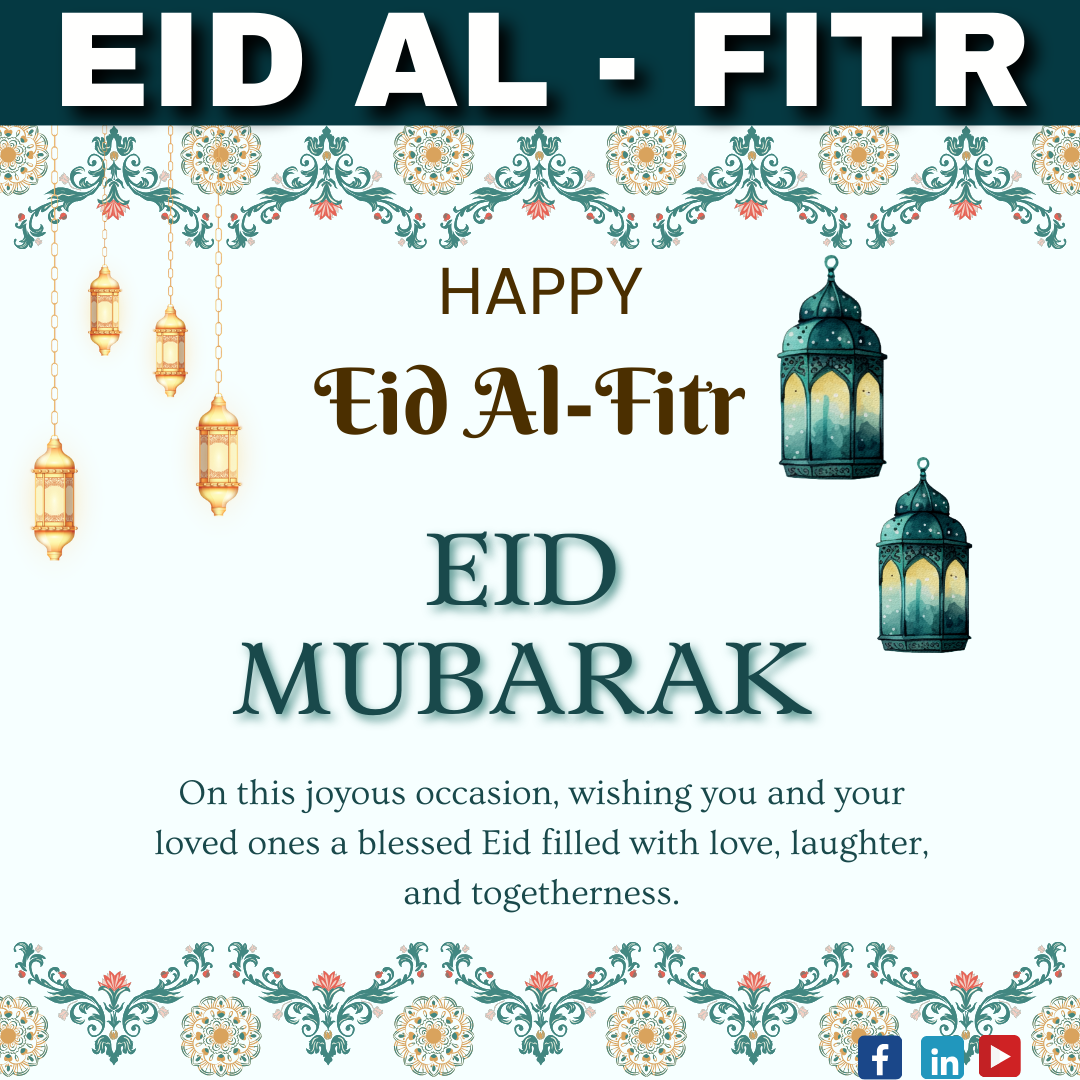Eid al-Fitr, the Festival of Breaking the Fast, is a momentous occasion celebrated by Muslims worldwide. As the crescent moon marks the end of Ramadan in 2024, Muslims eagerly anticipate the joyous festivities that accompany this sacred day. Let us delve deeper into the significance of Eid al-Fitr, explore its traditions, and understand the values it embodies.
Embracing the Spirit of Eid al-Fitr 2024: A Celebration of Unity, Charity, and Renewal
Understanding the Significance: Eid al-Fitr holds profound significance in Islam, serving as a culmination of the month-long journey of self-discipline and spiritual introspection during Ramadan. The fasting from dawn until dusk, along with increased acts of worship and reflection, fosters a deep sense of piety and connection with the Divine. Eid al-Fitr marks the completion of this spiritual journey, symbolizing purification, renewal, and gratitude for the blessings received.
Joyous Celebrations: The day of Eid begins with the performance of Salat al-Eid, a special congregational prayer held in mosques or open spaces. This communal prayer underscores the unity of the Muslim community and serves as a collective expression of gratitude and devotion. Following the prayer, Muslims exchange heartfelt greetings of “Eid Mubarak,” embracing one another with warm embraces and spreading joyous smiles.
The festivities continue as families and friends gather to share in elaborate feasts, consisting of traditional dishes and delicacies. From savory dishes like biryani and kebabs to delectable sweets like baklava and sheer khurma, the Eid table is adorned with a rich array of culinary delights. Sharing meals with loved ones fosters a sense of camaraderie and strengthens familial bonds.
Eid al-Fitr, the Festival of Breaking the Fast, is characterized by vibrant and joyous celebrations that bring together families, friends, and communities in a spirit of unity and gratitude. This section explores the various elements that contribute to the festive atmosphere of Eid al-Fitr.
Salat al-Eid: The celebrations of Eid al-Fitr typically commence with Salat al-Eid, a special congregational prayer held early in the morning. Muslims gather in mosques, prayer grounds, or outdoor spaces to perform this communal prayer, which consists of two rak’ahs (units of prayer) and is led by an Imam. The prayer is a symbol of unity and solidarity, as Muslims of all ages and backgrounds come together to express their gratitude to Allah for the blessings of Ramadan and seek His mercy and forgiveness.
Exchange of Greetings: Following the Eid prayer, Muslims exchange heartfelt greetings of “Eid Mubarak,” which translates to “Blessed Eid.” This traditional greeting is a symbol of joy and goodwill, reflecting the shared sense of celebration and camaraderie among the Muslim community. Families, friends, and neighbors embrace one another warmly, exchanging smiles, hugs, and blessings as they spread the festive spirit of Eid.
Festive Attire: One of the traditions associated with Eid al-Fitr is wearing new clothes or dressing in their finest attire. Many Muslims view Eid as an opportunity to adorn themselves in new garments, symbolizing a fresh start and a sense of renewal. From colorful traditional outfits to stylish modern ensembles, the streets come alive with a kaleidoscope of colors and patterns as people showcase their festive attire with pride.
Elaborate Feasts: Food plays a central role in the celebrations of Eid al-Fitr, with families preparing lavish feasts to share with loved ones and guests. Traditional dishes vary across different cultures and regions but often include a rich array of savory and sweet delicacies. From succulent kebabs and fragrant biryanis to decadent desserts like baklava and kunafa, the Eid table is laden with an abundance of culinary delights that tantalize the taste buds and satisfy the soul.
Hospitality and Generosity: Eid al-Fitr is also a time for hospitality and generosity, with Muslims opening their homes to family, friends, and neighbors to share in the joyous festivities. Invitations to Eid gatherings are extended far and wide, as hosts welcome guests with open arms and gracious hospitality. The spirit of generosity extends beyond the confines of individual homes, with many communities organizing communal meals and charity events to ensure that everyone can partake in the celebrations regardless of their socio-economic status.
Music, Dance, and Entertainment: In some cultures, music, dance, and entertainment are integral parts of Eid al-Fitr celebrations, adding to the festive atmosphere and uplifting spirits. Street performances, live music, and traditional dance displays are common in many regions, as people come together to revel in the joy of Eid. Children, in particular, delight in the festivities, enjoying rides at amusement parks, playing traditional games, and participating in fun-filled activities organized for their entertainment.
Acts of Charity: Eid al-Fitr emphasizes the importance of compassion and generosity towards those less fortunate. Muslims are encouraged to give Zakat al-Fitr, a form of obligatory charity, to ensure that everyone can partake in the joyous celebrations. This charitable contribution, typically given before the Eid prayer, serves as a means of purifying one’s wealth and sharing blessings with the wider community. By providing assistance to the needy, Eid al-Fitr embodies the spirit of compassion and solidarity that lies at the heart of Islam.
Cultural Diversity: One of the most captivating aspects of Eid al-Fitr is its cultural diversity, with each region infusing its unique traditions and customs into the celebration. From the vibrant Eid bazaars of South Asia to the colorful processions of the Middle East, the diversity of Eid festivities reflects the rich tapestry of Islamic heritage. Despite the cultural variations, the essence of Eid remains the same – a time of joy, gratitude, and spiritual renewal.
Looking Ahead: As we celebrate Eid al-Fitr 2024, let us reflect on the values it embodies and strive to carry its spirit forward in our daily lives. May the bonds of brotherhood and sisterhood forged on this auspicious day endure throughout the year, fostering unity, compassion, and understanding among all members of the global community. Eid al-Fitr serves as a reminder of the resilience of the human spirit and the power of faith to overcome adversity.
Eid al-Fitr, also known as the Festival of Breaking the Fast, is a significant religious holiday celebrated by Muslims worldwide. It marks the conclusion of Ramadan, the Islamic holy month of fasting, and is one of the most joyous occasions in the Islamic calendar. Eid al-Fitr is a time of spiritual renewal, gratitude, and communal celebration, where Muslims come together to express their faith and strengthen bonds of kinship.
Historical and Religious Significance: The origins of Eid al-Fitr can be traced back to the time of the Prophet Muhammad, who established it as a day of celebration following the month-long fast of Ramadan. The name “Eid al-Fitr” itself translates to “Festival of Breaking the Fast,” highlighting the significance of the holiday in marking the end of fasting. According to Islamic tradition, the day of Eid al-Fitr begins with the sighting of the new moon, signaling the start of Shawwal, the month immediately following Ramadan.
Observances and Traditions: The celebrations of Eid al-Fitr typically begin with the performance of Salat al-Eid, a special congregational prayer held in mosques or open spaces. This prayer, led by an Imam, is attended by men, women, and children, reflecting the inclusivity of the Muslim community. Following the prayer, Muslims exchange heartfelt greetings of “Eid Mubarak” and engage in acts of charity and goodwill.
One of the central traditions of Eid al-Fitr is the giving of Zakat al-Fitr, a form of obligatory charity. Muslims are required to give this charity before the Eid prayer, ensuring that the less fortunate members of the community can also participate in the festivities. Additionally, many Muslims also engage in the Sunnah of Eid, which includes rituals such as performing ghusl (ritual purification), wearing new clothes, and applying perfume.
Culinary Delights: Food plays a central role in the celebrations of Eid al-Fitr, with families preparing elaborate feasts to share with loved ones and guests. Traditional dishes vary across different cultures and regions but often include savory specialties such as biryani, kebabs, and samosas, as well as sweet treats like baklava, maamoul, and sheer khurma. Sharing meals with family, friends, and neighbors fosters a sense of unity and community, as people come together to enjoy the blessings of Eid.
Cultural Diversity: One of the most remarkable aspects of Eid al-Fitr is its cultural diversity, with each region and community adding its unique traditions and customs to the celebration. From the colorful processions and bazaars of the Middle East to the festive street parades of Southeast Asia, Eid al-Fitr is a testament to the rich tapestry of Islamic heritage. Despite the variations in customs, the essence of Eid remains the same – a time of joy, gratitude, and spiritual renewal.
Conclusion: Eid al-Fitr is a celebration of unity, charity, and renewal, marking the culmination of the sacred month of Ramadan. As Muslims worldwide come together to rejoice in the blessings of Eid, let us cherish the spirit of camaraderie and compassion that defines this joyous occasion. May Eid al-Fitr 2024 bring peace, happiness, and prosperity to all, and may it serve as a source of inspiration for building a more compassionate and inclusive world.
